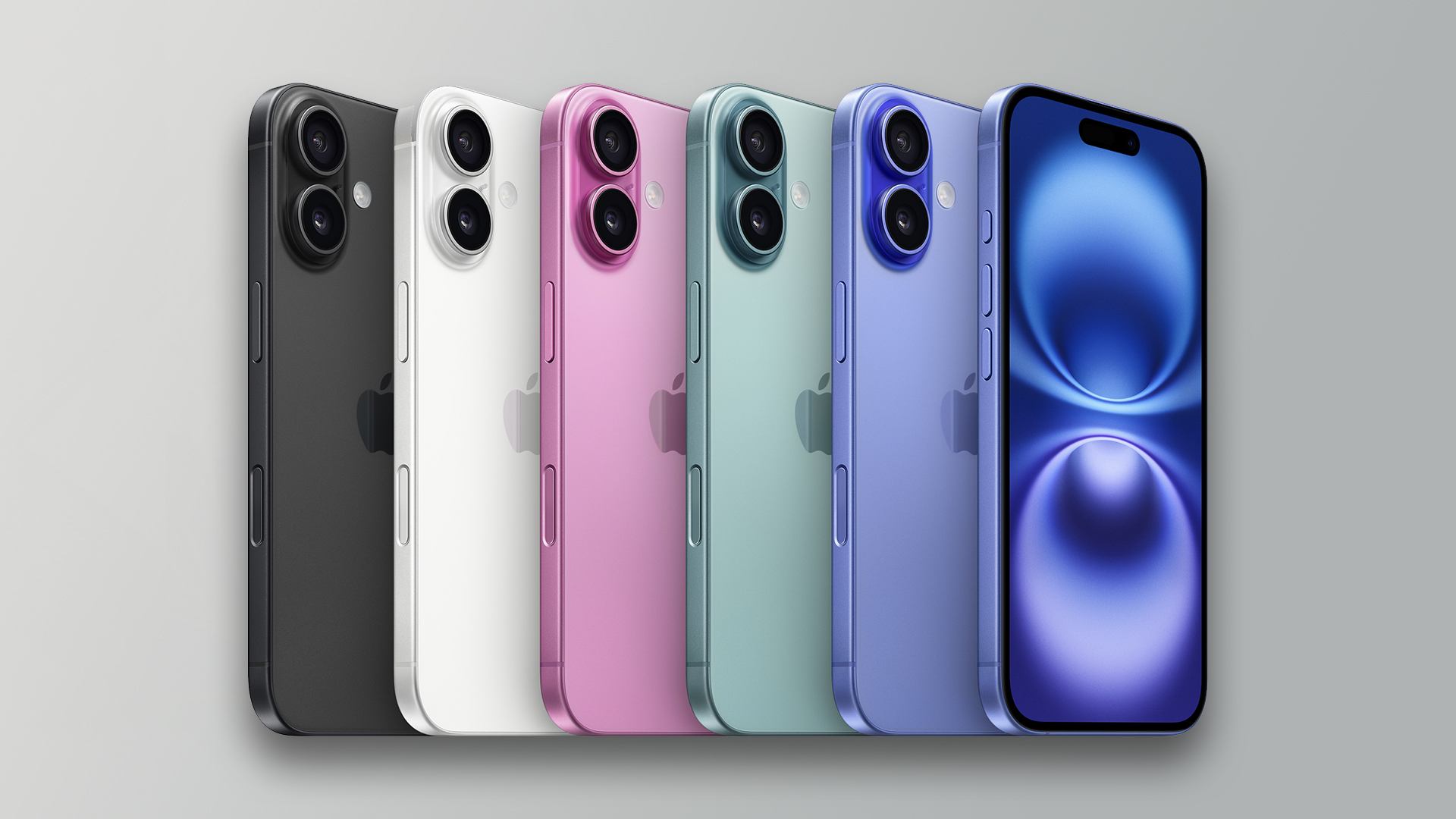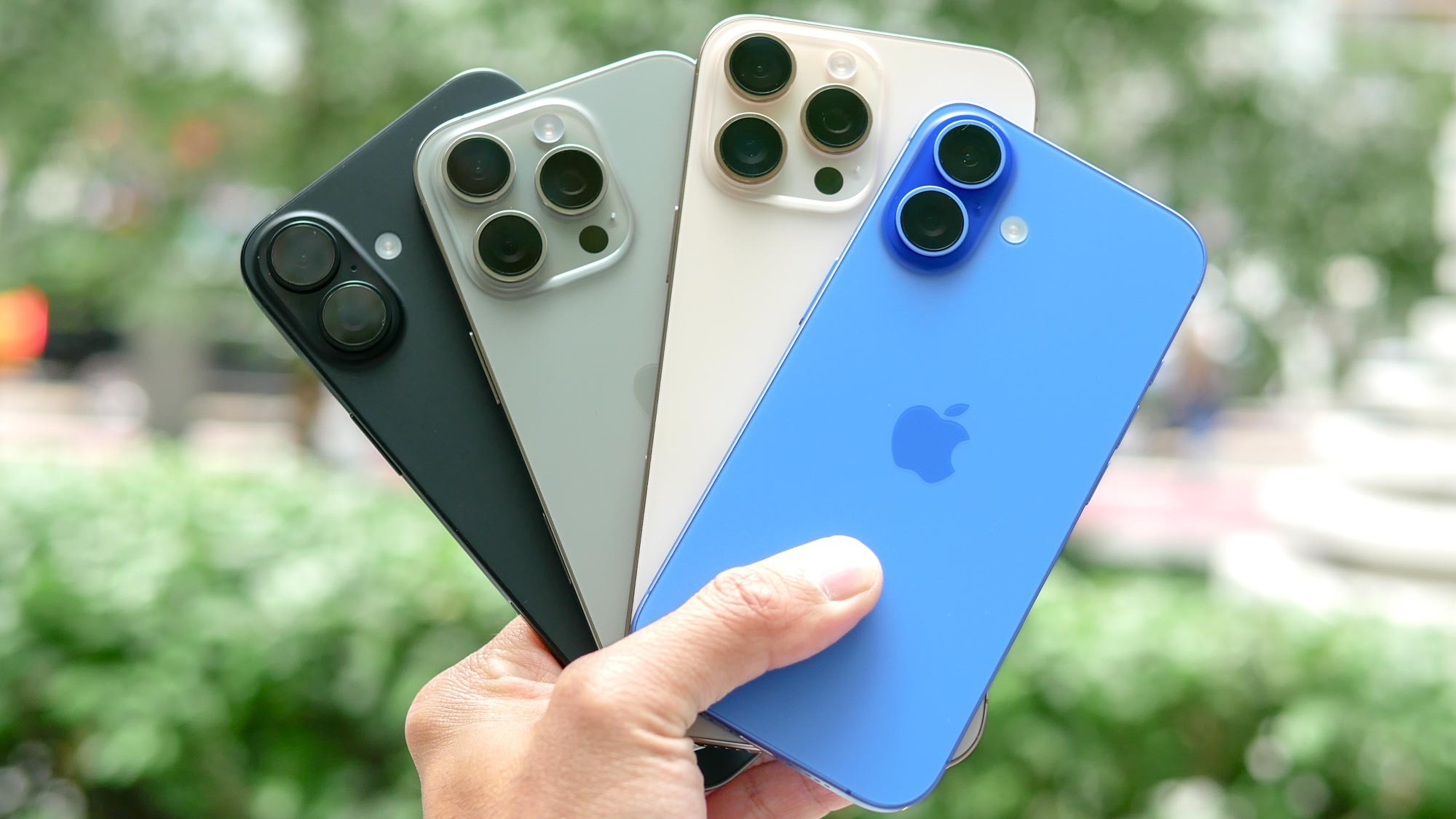iPhone 16 vs iPhone 16 Pro: Which new iPhone should you buy?

If you're deciding between the iPhone 16 vs iPhone 16 Pro, it's worth remembering that the entry-level model has picked up a lot of formerly Pro-exclusive features. This year the cheaper iPhone has a customizable Action button, Apple Intelligence, plus new upgrades like a 48MP camera, Camera Control button and the powerful A18 chipset.
But the iPhone 16 Pro series obviously has a bunch of extra benefits. The screens are now even bigger, and the 5x tetraprism lens is now available on iPhone 16 Pro. Plus, there's the adaptive ProMotion display, larger batteries and upgraded 48MP ultrawide camera. So which model is the best iPhone for you?
Here's our full breakdown and don't forget to check our iPhone 16 review and iPhone 16 Pro review for a more in-depth assessment of each device.
iPhone 16 vs iPhone 16 Pro: Specs
| Row 0 - Cell 0 | iPhone 16 | iPhone 16 Plus | iPhone 16 Pro | iPhone 16 Pro Max |
| Starting price | $799/£799/AU$1,399 | $899/£899/AU$1,599 | $999/£999/AU$1,799 | $1,199/£1,199/AU$2,149 |
| Screen size | 6.1 inches | 6.7 inches | 6.3 inches | 6.9 inches |
| Refresh rate | 60Hz | 60Hz | 1-120Hz | 1-120Hz |
| Processor | A18 | A18 | A18 Pro | A18 Pro |
| Storage | 128GB, 256GB, 512GB | 128GB, 256GB, 512GB | 128GB, 256GB, 512GB | 256GB, 512GB, 1TB |
| Rear cameras | 48MP main (f/1.6), 12MP ultrawide (f/2.2) | 48MP main (f/1.6), 12MP ultrawide (f/2.2) | 48MP main (f/1.78), 48MP ultrawide (f/2.2), 12MP telephoto (5x, f/2.8) | 48MP main (f/1.78), 48MP ultrawide (f/2.2), 12MP telephoto (5x, f/2.8) |
| Front camera | 12MP (f/1.9) | 12MP (f/1.9) | 12MP (f/1.9) | 12MP (f/1.9) |
| Battery life | 22 hours, vide playback; 80 hours, | 27 hours, vide playback; 100 hours, | Up to 22 hours streaming video | Up to 29 hours streaming video |
| Size | 5.8 x 2.8 x 0.31 inches | 6.3 x 3.1 x 0.31 inches | 5.89 x 2.81 x 0.32 inches | 6.42 x 3.06 x 0.32 inches |
| Weight | 6 ounces | 7.03 ounces | 7.03 ounces | 7.99 ounces |
| Colors | Black, White, Pink, Teal, Ultramarine | Black, White, Pink, Teal, Ultramarine | Black, White, Desert and Natural Titanium | Black, White, Desert and Natural Titanium |
iPhone 16 vs iPhone 16 Pro: What's the same?

The major similarity between all four iPhone models is the new Camera Control button, which lives on the bottom left-hand side of the phone, and the fact they all run Apple Intelligence. All of the new iPhone 16 devices will also offer Visual Intelligence, which is currently available in the iOS 18.2 beta but is confirmed to launch to everyone sometime in December. This new AI vision mode allows you to look up real-time information on what the camera sees and act on it.
The Camera Control is a multi-purpose haptic button that also ties into Visual Intelligence if you want it to. The primary function of the button is to open the camera app quickly, and better control what happens without having to rely on the usual touchscreen controls.

But there’s more to it than that. A light tap on the Camera Control will launch a minimalistic, distraction free camera interface, with the option to slide over the button to control features like camera zoom. A second light tap opens up a small menu, which you can navigate through options like aperture, depth and camera styles.
The Action button may have debuted on the iPhone 15 Pro series but it’s made the jump to non-Pro phones this year. Meaning iPhone 16 and iPhone 16 Pro owners alike will be able to customize the button to do one of a number of actions or shortcuts.
Get instant access to breaking news, the hottest reviews, great deals and helpful tips.

The Audio Mix feature for videos is available across all four new iPhones. With it, you can tweak the sound in your clips so that you can focus on the voices in frame, make it sound like a studio recording or mix in some ambient noise.
Other iPhone 16 features previously exclusive to Pro models also include the ability to capture spatial photos and video with the new camera layout, hardware accelerated ray-tracing from the new A18 chipset, and the ability to play AAA game titles on the go. Wi-Fi 7 connectivity is also available on all four models, though that’s completely new for 2024.

Visual Intelligence is an AI camera mode which links Apple Intelligence to the camera and lets you scan and analyze the world around you. Think of it as a kind of AI Vision, which we’ve seen from various AI chatbots, or Google Lens. Visual Intelligence is able to scan text, identify animals or objects, translate text, search Google or get ChatGPT to help you out and so much more. All using a mix of on-device and cloud-based computing.
Naturally every every other Apple Intelligence feature we’ve heard about so far are available on all iPhone 16 models — alongside the iPhone 15 Pro and iPhone 15 Pro Max. That means all iPhone 16 owners will be able to enjoy features like Image Playground’s image generation, custom genmoji, AI-enhanced search in Apple Photos, the enhanced version of Siri, AI mail and notification summaries and more.
The same goes for all the new features available in iOS 18, including satellite messaging, customizable home screens, locked apps and Hidden Folder, iPhone Mirroring on Macs, RCS messaging and more.
iPhone 16 vs iPhone 16 Pro: What's different?

There are a significant number of iPhone 16 vs iPhone 16 Pro differences you need to know. Normally the standard and Pro iPhones some in the same size configurations — but that’s no longer the case. The iPhone 16 and iPhone 16 Plus still have the same 6.1- and 6.7-inch displays as ever, but the Pro and Pro Max have grown to a respective 6.3 and 6.9 inches.
This also means the the iPhone 16 Pro Max is the largest iPhone Apple has ever made and that could be appealing for those of you that like large screen phones — or a complete turn off for those who don't.
Sadly, beyond this screen upgrade on Pro models, the rest of the display has stayed exactly the same on all four new iPhones. That means the standard models don’t have the ProMotion upgrade people have been pestering Apple for for years, and are stuck with a 60Hz display instead of a 1-120Hz adaptive refresh rate.
Likewise, the titanium shell is also an iPhone 16 Pro exclusive, complete with a new internal thermal management system that's aided by a new graphite-clad aluminum substructure. Considering the iPhone 15 Pro did have some issues with overheating, and the fact the A18 Pro is likely to be a very hard worker, the more heat Apple can dissipate the better.

The A18 Pro may have a similar name to the iPhone 16’s A18 chipset, but the Pro chip is an upgrade in itself. While Apple hasn’t said how much more powerful the chip is compared to the standard A18, it is supposed to be 15% faster and 20% more efficient than the A17 Pro with 2x faster ray tracing and video encoding to boot.
iPhone 16 benchmarking scores can give us an idea of how much more powerful the Pro model is. While we shouldn't take these scores as gospel, we can see that there's a noticeable boost in performance power with the iPhone 16 Pro — especially on multi-core testing. But the iPhone 16 still outperforms the best Android phones in those same categories, which is worth keeping in mind.
According to Apple, a lot of the focus is on Apple Intelligence and on-device AI, but the speed of the chip will be beneficial for other things — especially in the camera department. According to Apple it will help power the new 4K 120fps Dolby Vision video recording capabilities — and a zero-lag camera shutter.

The iPhone 16 Pro has an upgraded camera, including the debut of the tetraprism telephoto lens on the iPhone 16 Pro — complete with 5x optical magnification. While the tetraprism hasn’t changed on the iPhone 16 Pro Max, both Pro phones have had some major improvements on the other two rear camera lenses. The most obvious is the ultrawide now offers 48MP resolution, compared to 12MP on iPhone 16 Pro.
That lens, and the 48MP main camera lens, also have larger quad-pixel sensors. This new sensor also helps with shutter lag, while promising 2x faster performance and auto-focus. Larger sensors generally allow more light to be captured as well, offering better picture quality and low light performance.

Naturally, the Pro models are the only iPhones to offer USB 3 charging and data transfer speeds, while the iPhone 16 is limited to the same USB 2.0-speeds you’d get back when Lightning cables were still a thing. Both phones also offer larger batteries, with iPhone 16 coming in 6.3% larger than iPhone 15, and iPhone 16 Pro growing by 9.4%.
Our iPhone 16 battery life testing also showed a significant improvement on both phones, aided by the larger batteries and A18's improvements to energy efficiency. iPhone 16 Pro is particularly noteworthy because it clocked in at 14 hours and 7 minutes, which is over 3 hours longer than the iPhone 15 Pro. iPhone 16 was no slouch either, having lasted 12 hours 43 minutes — an improvement of over 90 minutes compared to last year.
iPhone 16 vs iPhone 16 Pro: Bottom line

There are times when it pays off to go the cheaper route, and the iPhone 16 might be one of those times. While there is a very clear boundary between the standard and Pro models, the various upgrades offered this year mean that the iPhone 16 is closer to being a Pro model than ever before.
Of course, various things are still missing from the regular iPhone 16 and iPhone 16 Plus, like the tetraprism telephoto lens, adaptive ProMotion display, the higher performance A18 Pro chipset and the new 48MP ultrawide camera and audio upgrades. There’s no doubt that those are all great things, but the question is whether they’re worth an extra $200+ dollars to get hold of now.
Saving that money might be worthwhile, and it could be enough to get you a storage upgrade or some useful accessories — like a case, the AirPods 4, or part of an Apple Watch Series 10. It all depends on just how much you care about the iPhone 16 Pr's larger displays and extra camera and performance features.
More from Tom's Guide
- I just tried the Apple Watch Series 10 — and it was better than I expected
- The AirPods Pro 2 health features are really exciting — here's why they're so important
- iPhone 16 and iPhone 16 Pro colors: Here's your options

Tom is the Tom's Guide's UK Phones Editor, tackling the latest smartphone news and vocally expressing his opinions about upcoming features or changes. It's long way from his days as editor of Gizmodo UK, when pretty much everything was on the table. He’s usually found trying to squeeze another giant Lego set onto the shelf, draining very large cups of coffee, or complaining about how terrible his Smart TV is.

